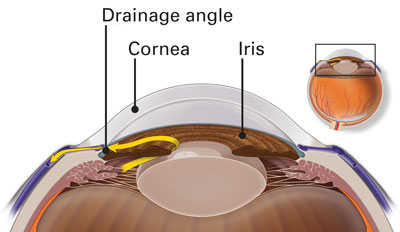Eye pressure – also called intraocular pressure (IOP) – is a measurement of the fluid pressure inside the eye. IOP is used as a measurement for diagnosing eye disease. IOP it’s not a fixed number, but fluctuates in a person, but also from person to person.
Increased IOP also known as ocular hypertension is a clinical indicator of glaucoma while, a decrease in IOP can be an indicator for progressive detachment of the retina. Low pressure- below 5mm HG – called ocular hypotony.
The average eye pressure is approximately 15mm HG (millimeters of Mercury), like the way a thermometer measures temperature using mercury, the range of normal eye pressure is much larger. About 90% of people will fall between a pressure of 10 and 21.
The eye has a jelly like substance called vitreous humor filling most of the back part of the eye. A more watery liquid called aqueous humor also is present, most of which is in the front part of the eye behind the cornea and in the front of the iris.
It is important that you see an eyecare specialist to receive a thorough examination and determine if your eye pressure is problematic. During a complete eye exam your doctor will measure your eye pressure. The pressure check is called tonometry. Having pressure readings during routine checkups allows your doctor to track your personal, normal range of IOP year to year and watch for excessive changes in either direction.
In a healthy eye, a small amount of new aqueous humor is always entering the eye while an equal amount drains out. Most of the aqueous humor flows out of the eye through the drainage angle in front of the iris. This equal flow maintains of stable pressure.
#eyegotcha
#eyepressure
Sources:

